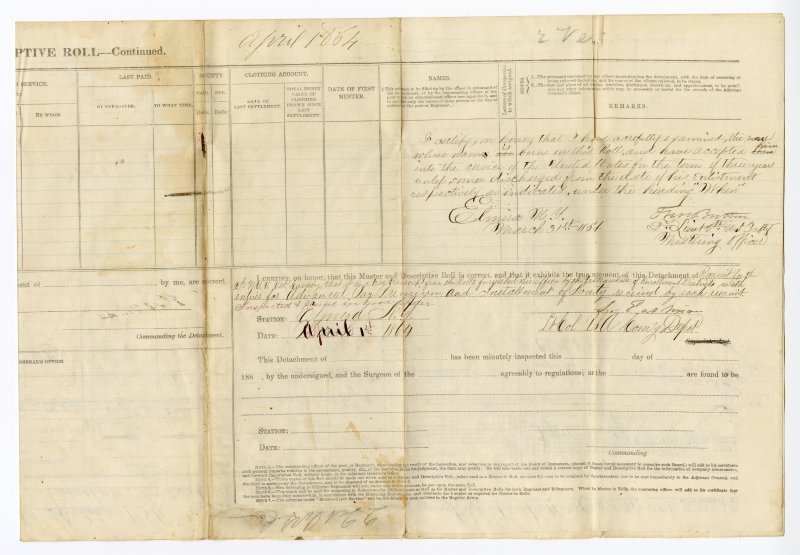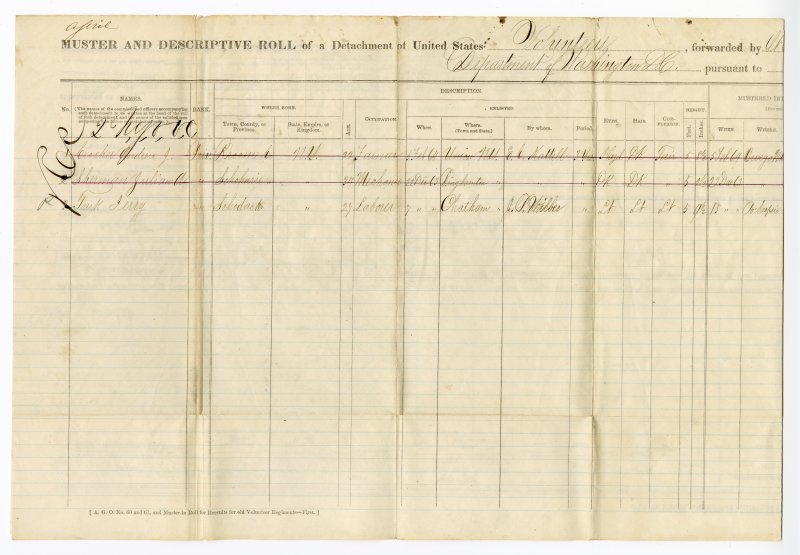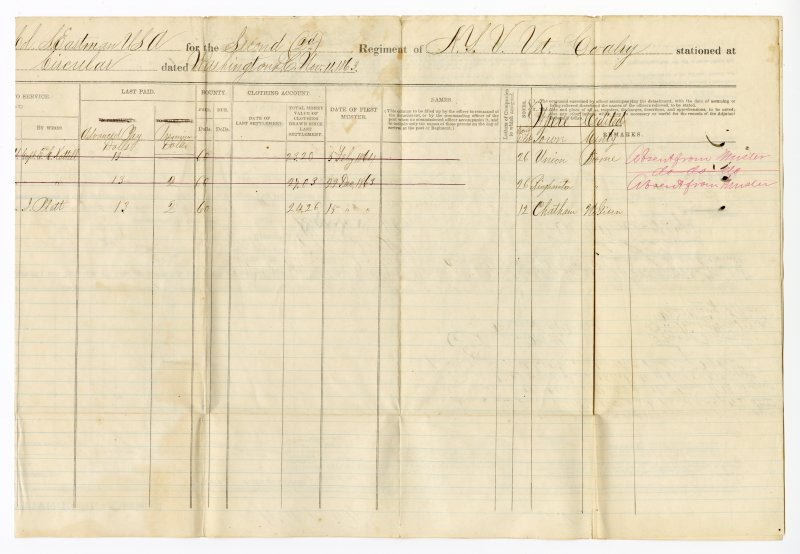2nd New York Veteran Cavalry
Item DOC-8833
April 1, 1864
Seth Eastman
Price: $160.00
Description
Original Civil War document written in period ink. Muster and Descriptive Roll related to the 2nd New York Veteran Cavalry. Document is signed at Elmira, NY and is signed by Lieutenant Colonel Seth Eastman, USA.Eastman made his career with the U.S. Army. He became an accomplished artist and used his skills in mapmaking and recording Army activities. In 1830 he was assigned to Fort Snelling near what became Minneapolis in present-day Minnesota. A large installation with 20 officers and up to 300 enlisted men, the fort was deep in American Indian territory on the upper Mississippi River. While stationed there for three years, Eastman learned the Sioux language and captured many scenes of American Indian life in the territory. He painted and sketched prolifically.
From 1833 to 1840, Eastman was assigned to West Point, where he taught drawing (used for mapmaking). In 1841 Eastman was appointed commander of Fort Snelling and returned to Minnesota. While stationed there for several years with his second wife and growing family, he continued to study and paint Native American life. Their son Frank was born in 1844, daughter Virginia in 1847, and son John in 1849. He learned much about the Dakota culture particularly. He painted and drew pictures of the Sioux villages of Kaposia and Little Crow as well as settlements in present-day Scott, Wabasha, and Winona counties.
Hearing that Congress had authorized a study of Indians by the explorer and former U.S. Indian agent Henry Rowe Schoolcraft, Eastman asked to be assigned as illustrator. Finally in 1849 at age 41, he had the chance. Captain Eastman and his family settled in Washington, where their son Harry was born in 1854.
Eastman began to work on what would be hundreds of pictures to illustrate the massive Schoolcraft study, published in six volumes from 1851–1857.
It was a monumental work that for Eastman consumed five years. During that time, he completed some 275 pages of illustrations to accompany Schoolcraft's six-volume Information Regarding the History, Conditions, and Prospects of the Indian Tribes of the United States. When Volume I came off the press in early 1851, Eastman could take just pride in his accomplishment. His precise and exquisitely executed illustrations of Indian life, painted almost entirely from his frontier sketches, proved that he was singularly the best-qualified person in the country to undertake this epic work.
Eastman's work, which complements the work of Hudson River School landscape painters of his era, illustrates how images of the landscape supported and extended the United States' work of empire building. That is, the images of Americans' possession and domination of the landscape supported their mission of empire. Eastman's images recorded the empire's reach into the northwest and helped spur it on. In this regard, Eastman was working on a similar mission to the landscape painters who were working from private commissions. Near the end of his career, at the rank of Lieutenant Colonel, Eastman was commissioned by the House Committee on Military Affairs to paint pictures of seventeen important forts. He completed these paintings between 1870 and 1875. One controversial painting was Death Whoop, which was twice removed from display because of negative comments from viewers, as it portrayed an Indian's scalping a white man. In the 1930s the paintings were displayed again in the US Capitol Building.



